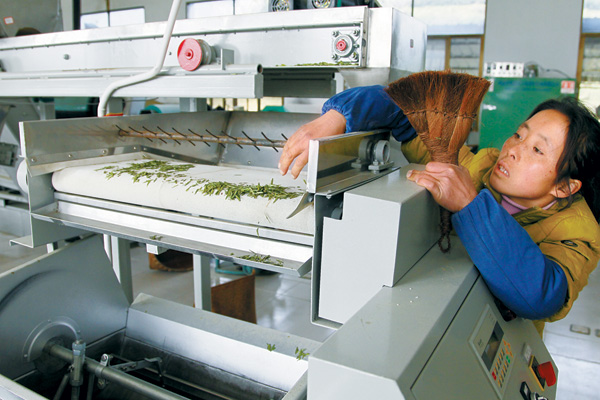Early tea chase
Updated: 2012-04-01 07:38
By Xie Yu and Zhang Jianming (China Daily)
|
|||||||||||
"We used electric bulbs for added light, and liquefied carbon dioxide to accelerate photosynthesis so the tea grows faster."
Shao adds that no chemical fertilizer is used, only the organic residue from rapeseeds after the oil is pressed. This also keeps the soil acidity at around pH 6.0.
His early tea is named Qiandao Jade Leaves, meaning every leaf is green and precious as jade.
It needs a practiced connoisseur to tell the differences between early Qiandao Jade Leaves and top quality West Lake Dragon Well tea, or Xihu Longjing, the most renowned green tea in China.
Both are dried and roasted into yellowish green smooth, flat leaves.
Brewed in hot water, the early tea has a lighter amber hue with a brighter clearer infusion, a slight sweetness and lighter tannins.
Xihu Longjing is known for its roasted chestnut bouquet, while the early Jade Leaves combines the aroma of chestnut and newly sprouted spring buds. The only reservation is that the early tea is still a little weaker in taste and aroma.
"In my opinion, the quality of early Qiandao Jade Leaves is as good as the best Xihu Longjing," asserts Huang Xiaoping, secretary-general of the tea association in Chun'an county. "More important, its picking time is more than a month earlier, which allows the tea to monopolize the market before other teas are even ready for picking."
The success of Shao's early tea is an inspiration for other tea planters in Chun'an.
In Yu Zheng's hillside tea plantations, over 150 tea pickers are plucking the terminal buds from the tea bushes.
Wei Hongmei, 38, a very experienced tea picker, says she would stand for over 10 hours a day, and can pick no more than two kilograms of fresh tea leaves.
 |
|
Modern technology is employed in the tea production in Chun'an. |
Today's Top News
President Xi confident in recovery from quake
H7N9 update: 104 cases, 21 deaths
Telecom workers restore links
Coal mine blast kills 18 in Jilin
Intl scholarship puts China on the map
More bird flu patients discharged
Gold loses sheen, but still a safe bet
US 'turns blind eye to human rights'
Hot Topics
Lunar probe , China growth forecasts, Emission rules get tougher, China seen through 'colored lens', International board,
Editor's Picks

|

|

|

|

|

|





